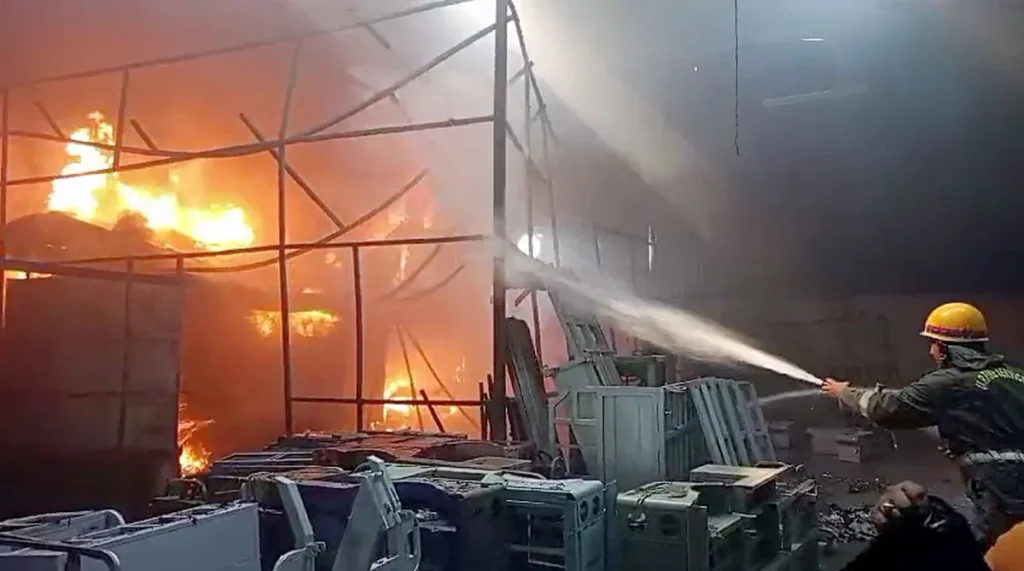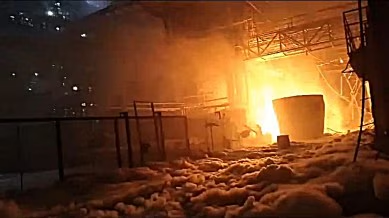Executive Summary
On January 1, 2025, a devastating fire erupted at the ArcelorMittal Nippon Steel plant in Hazira, Surat, Gujarat, resulting in the tragic loss of four contractual workers. The fire originated in the coal storage section of the plant and rapidly escalated, causing significant damage and highlighting serious gaps in industrial fire safety protocols. This case study analyzes the incident’s timeline, causes, response efforts, impacts, and lessons learned to provide actionable recommendations for preventing future fatalities in industrial environments.
Background
ArcelorMittal Nippon Steel is a leading steel manufacturing facility with complex operations involving the handling and storage of large quantities of coal—a highly combustible material. The Hazira plant employs hundreds of workers, including contractors involved in coal management and maintenance.
Coal fires pose a particular risk due to spontaneous combustion tendencies in poorly managed coal stockpiles, coupled with operational hazards in industrial settings.
Incident Timeline
- January 1, 2025, Morning: A coal stack in the plant’s storage yard ignited, possibly triggered by the heat generated through spontaneous combustion or an external spark.
- Within 30 minutes: The fire expanded rapidly, fueled by the dry coal and nearby flammable materials.
- Immediate Impact: Workers in the vicinity were alerted; some managed to evacuate, but four contractual workers were trapped.
- Emergency Response: Plant emergency teams and the local firefighting units were notified and responded promptly.
- Containment: Firefighting efforts lasted several hours before the fire was fully controlled.
- Aftermath: Fire investigators secured the area for analysis. Casualties were confirmed, plant operations temporarily halted.
Root Causes and Contributing Factors
- Coal Stockpile Management:
Improper stacking and ventilation of coal piles can lead to heat accumulation and spontaneous ignition. Indications suggest that the coal pile arrangements at the plant lacked adequate monitoring and preventive measures. - Inadequate Fire Detection:
Delays in detecting the fire at the earliest stage exacerbated the spread. The plant’s fire alarm and detection systems were reportedly insufficiently sensitive for the coal storage area. - Fire Suppression Deficiencies:
The fire suppression infrastructure, such as sprinklers and foam systems, was either lacking or ineffective in the affected zone. - Emergency Preparedness and Training:
While emergency protocols were in place, the trapped workers’ inability to evacuate safely indicates gaps in evacuation route planning and worker training.
Impact Assessment
- Human Cost:
Four contractual workers lost their lives, a profound human tragedy affecting families and communities. - Operational Disruptions:
The plant suspended coal handling operations temporarily, impacting production schedules and financial performance. - Material and Property Loss:
Significant damage to coal stockpiles and adjacent plant facilities occurred, requiring costly repairs and replacements. - Reputation and Regulatory:
The incident attracted regulatory scrutiny, prompting government agencies to demand enhanced compliance measures.
Emergency Response Evaluation
- Strengths:
- Rapid mobilization of firefighting teams minimized further spread.
- Coordination between plant safety officers and municipal fire services was effective.
- Weaknesses:
- Initial fire detection lagged, delaying containment efforts.
- Insufficient evacuation signage and blocked escape routes hindered worker egress.
Recommendations
- Enhanced Coal Storage Safety:
Implement best practices in coal pile management, including ventilation, temperature monitoring, and regular inspection to detect signs of spontaneous heating. - Technology Upgrades:
Install advanced fire detection systems designed for combustible dust and coal storage environments, coupled with automated sprinklers and foam suppression. - Worker Training & Drills:
Conduct mandatory fire safety training and evacuation drills tailored to industrial hazards, ensuring all workers, including contractors, understand escape routes and emergency actions. - Infrastructure Improvements:
Clear and mark evacuation paths rigorously. Install emergency lighting and signage compliant with industrial safety standards. - Regulatory Compliance:
Adhere strictly to fire safety codes. Establish third-party audits to verify compliance and readiness.
Conclusion
The Hazira coal fire disaster underscores the critical need for stringent fire safety measures in industrial settings, especially where combustible materials are handled. Protecting human lives requires not only compliance but a proactive culture of safety, involving continuous risk assessment, personnel training, and technological investment. Learning from this tragedy is essential to prevent recurrence and safeguard India’s industrial workforce.




